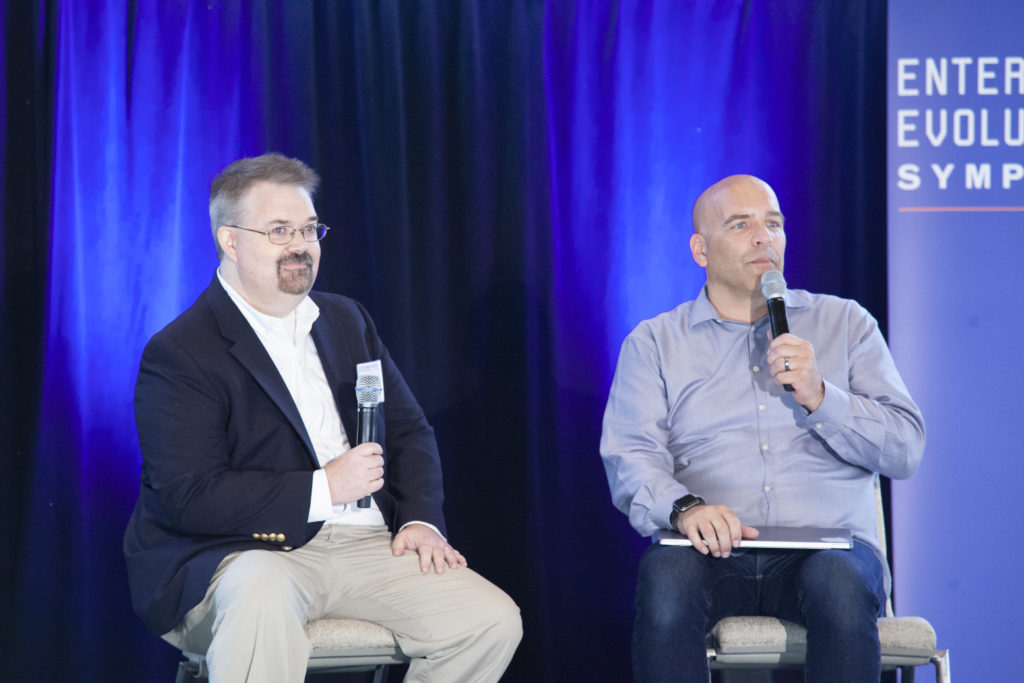
CDSA, Fortinet at EES: More Data Equals More Problems
There are many routes through which companies can collect consumer data and it has become much easier to collect and use this data to drive a direct-to-consumer (D2C) strategy.
D2C enables companies to gather data directly from interactions with consumers to allow for more detailed customer segmentation and ultimately better promotion and personalized product assortment.
However, with this data comes the need to house, analyze, secure and apply insights from data to business processes. While companies can acquire data in many ways, there are smart formulas to ensure a successful and secure data journey.
“With my customers, what I’ve tried to help them get their hands around is that you hear … data is the new oil, data is this business valuable asset that we need to be able to gather and quantize and leverage and use,” Ben Strother, cybersecurity specialist at Fortinet, said Sept. 21 at the Entertainment Evolution Symposium (EES), during the session “More Data = More Problems… STOP THE INSANITY!”
Data combined with machine learning “using our analytics and our consumer insight … is a definite business opportunity,” he said.
‘A Lot of Risks’
But he warned: “You also are creating a lot of risks and you’re kind of increasing your company’s attack surface because you’re pulling in personal and identifiable information about households now in the direct consumer model.”
And “a lot of those households involve minors so you’re now talking about children under 13 and the potential” of Child Online Protection Act (COPA) issues around that, he pointed out.
 There is also, meanwhile, a “whole issue around billing and payment card information that otherwise studios wouldn’t care about,” he noted.
There is also, meanwhile, a “whole issue around billing and payment card information that otherwise studios wouldn’t care about,” he noted.
Therefore, this “does require a level of maturity and sophistication of understanding what data” is being collected, along with other important questions an organization needs to ask itself, including: “Where are you keeping that data? How are you securing access to it? Who has access to that data? How do you share it – both internally and [with] partners?”
He added: What the industry is facing is “kind of a new frontier, I think, for a lot of creators of continent and media. This is not something that they’ve had to solve before.”
But he told attendees: “I do think that it is solvable and there are certainly other standards … that address some of it and there are regulations. I do think that the piece that matters is understanding that you have to protect that data from the whole life cycle of when it’s acquired to how you store it, to how you use it, to how you get rid of it eventually. Because if it doesn’t have a business value, it’s now a risk or reliability that you shouldn’t keep on the books, right?”
The Search for the ‘Holy Grail’
Every session at ESS “seems to be about data and about leveraging data and how to find that holy grail, the hidden nugget in there,” said Richard Atkinson, president of the Content Delivery Security Association (CDSA).
This is “clearly about response, engagement and optimization and personalized experience and all those things,” Atkinson noted. “And a bunch of it is the same old thing so it has the same challenges around technical challenges, process challenges [and] business challenges,” he said.
Businesses always tend to be “looking always in some ways for the silver bullet, and so right now everything is swinging to this as the silver bullet but the business isn’t very patient in most cases,” he pointed out.
What a company needs is smart people working on architecture, data models and “getting everybody on the same page,” he said. “That, in my experience, has been probably one of the toughest things.”
Organizations today tend to have traditional teams, he went on to say. “They have an IT team and they have all those kind of things but they also have a brand team that’s involved in one way or another or think they should be involved. They have a privacy team. They have a legal team, which may or may not be the privacy team. They have things like the security team. They have an identity team. They have a sales ops team. They have a marketing team. They have an engagement team. But everyone of [those] teams, in many ways, is a separate element reporting in some separate way, and I always say that they’re all on mission from God,” he joked.
In other words, he said, “they all believe that they are the most important thing.” Executive management always thinks it “can turn the business around or we can, you know, squeeze this rock or we can do this, or we can provide this insight,” he noted. “So all these business plans, if you want to call them that, are all on a convergent crash course.”
Guy Finley, president and CEO of MESA, moderated the panel discussion.
The Entertainment Evolution Symposium (EES) was presented by the Pepperdine Graziadio Business School Institute for Entertainment, Media and Sports (IEMS) and the Hollywood IT Society (HITS) and was sponsored by Iron Mountain, Signiant, Whip Media, Atos, Fortinet, FPT Software, invenioLSI, Perforce, Vision Media, and EIDR.
